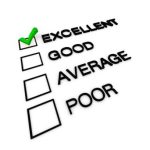
How to Move from an Operational to a Governance Board in 5 “Easy” Steps
One of my early professional jobs involved making hospital visits. One week at a new hospital, I rode the elevator to the second floor to visit a patient. After our meeting, I took the elevator to return to my car.
It’s a common experience, right? Except that, as I exited the elevator, I realized I saw the same bulletin board across the hallway I’d seen moments before.
I’d taken a ride to nowhere twice.
Moving from working (or operations) to a governance board can feel like riding to nowhere. You gain agreement from your board to focus on strategy and governance, thinking you’re making progress. But later in the same meeting, the working board circles back to offer unsolicited advice on running programs, hiring staff, and more.
Governance boards establish policies, select the CEO, and provide high-level fiduciary oversight. They do not run programs, reorganize the development office, micromanage events, suggest design concepts for brochures, and make hiring decision (except for the CEO) make hiring decisions, as Vicki Pugh, Vice President for Development at Palm Beach Atlantic University shares.
How to Move from a Nonprofit Operational or Working Board to a Governance Board
 1. Assign Governance Accountability
1. Assign Governance Accountability
Shared the different responsibilities of the board, CEO, and staff with your board. Then, establish governing accountability within the board to move from an operational to a governance board. Lots of options exist. Your chair can begin meetings by asking a different member to track the time spent on governance vs. management issues. At a different meeting, another member can be assigned to predict if an agenda items might slip into an operations discussion. A third option is for the board to tally the times he or hears governance comment. The goal is to let the board manage its own accountability.
Be careful here not to reduce the board accountability. Watch this video for common errors.
 2. Check Your Agenda for Governance Topics
2. Check Your Agenda for Governance Topics
Boards want to give you the help you need. Make sure you give them substantial issues to address, such as policy and strategy questions, rather than management concerns (e.g., Which option is likely to move our growth strategy farthest ahead?) Check this video for help crafting an outstanding board agenda.
 3. Remind Your Board of the Governance Destination
3. Remind Your Board of the Governance Destination
Prompts help when changing old habits. Build in governance prompts into your meetings. For example, give everyone a red card to indicate “stop.” Invite members to use their cards when the discussion veers into operations or working board habits. Start your meetings by congratulating them on staying focused on governance during the last meeting. Encourage your board to engage in ongoing education about governance. This could involve bringing in guest presenters, attending governance workshops, or providing reading materials on effective board practices. Creating a culture of continuous learning helps ensure that board members stay informed about best practices and new trends in nonprofit governance.
 4. Be Brief
4. Be Brief
Insist on short meetings. Exploring strategy is hard work. Long sessions tire people. Tired people get cranky. Cranky people dig into details, make poor decisions, and offend others.
Don’t believe me? Notice when your meetings go negative. Nine out of ten times, you’ll find you passed the one-hour mark. For more tips on outstanding board meetings, watch this video.
 5. Evaluate Governance at Each Meeting
5. Evaluate Governance at Each Meeting
Before you close meetings, ask the board to evaluate your process. Rotate tactics. At one meeting, ask open-ended questions. At the next, request anonymous answers written on index cards. Another time, hand out a quick survey with a Likert scale, etc. Ask three or fewer questions. Always include a variation of this one: What percent of the meeting did we spend on governance versus operations?
You can ride the elevator to a board that focuses on governance. Assign accountability. Remind members of the destination. Evaluate progress. And, just like with elevator rides, be brief.
Your Challenge Today
Pick one of the governance board behaviors above. Apply it to your next board meeting.
Key Takeaways
- Focus on Governance: Prioritize policy, strategy, and oversight.
- Assign Accountability: Track and manage governance activities.
- Agenda Management: Address key governance topics in meetings.
- Use Behavioral Prompts: Remind board members to stay focused.
- Keep Meetings Brief: Short meetings maintain focus and reduce fatigue.
- Regular Evaluation: Continuously assess meetings for governance focus.
- Promote Continuous Learning: Encourage ongoing governance education.
If you are not ready to move toward a governance board, start with getting your board to stop micromanaging. Read How to Stop Your Board from Micromanaging.
For More about Nonprofit Boards
Watch How to Recruit Stellar Board Members.
Read Guilty As Charged: Prove Your Board Supports Your Organization to engage your board.
For more answers, explore Karen’s Nonprofit CEO Library.
For solutions delivered to your inbox, sign up for Karen’s CEO Solutions.
Need more help with your board? Karen is available for a mini-consult and more. Click here to email or here to set a time to chat.
Karen Eber Davis is a nonprofit strategic planning consultant who works with visionary leaders committed to taking their organizations to new heights. She offers customized strategies, assessments, and coaching designed to help leaders lead their organizations to achieve their potential. She is the author of 7 Nonprofit Income Streams and Let's Raise Nonprofit Millions Together.
Categories
If you appreciate these Added Value posts, please consider subscribing.
Latest Posts
- How New Nonprofit CEOs Secure Board Buy-In for Strategic Planning
- How Nonprofit Leader Navigate Crisis with Clarity & Confidence
- One Way AI Can Help You Find a Path Where None Exists
- In Crisis? Resist Cutting Your Ability to Make Income
- Nonprofit Strategic Planning Assessment: 10 Questions to Strengthen Your Strategy
